Across Ireland, most farmers endured a wet July and mediocre August in terms of weather. But for the Henderson family, the July rain was welcomed on their coastal farm at Greencastle, just outside Kilkeel in Co Down.
James farms alongside his wife, Brenda, and son, Scott, with his two other children, Ross and Lois, also helping out.
The land is free-draining, giving it an obvious natural advantage when compared to land further north and west.
But farming on top of sand brings its own challenges. The key for every business is to make the most of what you have and in the case of the Henderson farm, it would be hard to find a more efficiently run beef and sheep unit on this island.
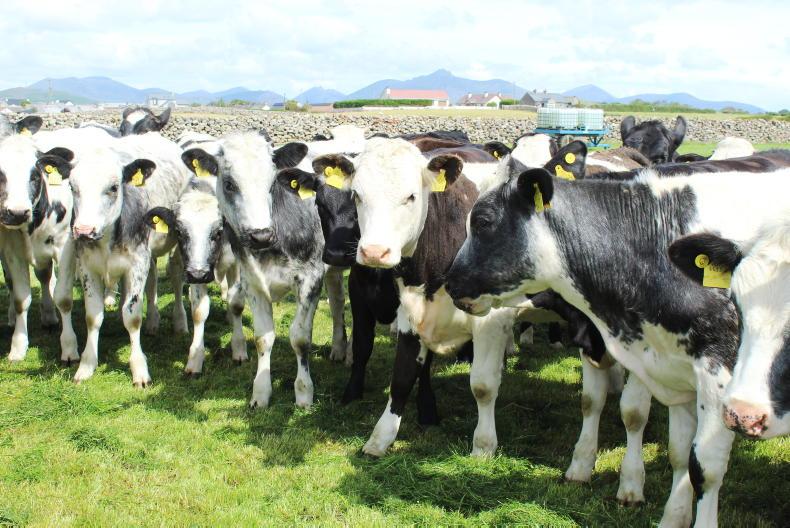
James prefers Blue cross heifers for his finishing system. Between 80 and 90 calves are purchased every autumn and finished at 23 to 24 months around 340kg deadweight.
History
The 150ac Seafields Farm has a unique history having previously been the site of a US army base during World War II.
Hosting a summer visit by the Ulster Grassland Society, James told members that by the 1960s, around 30 acres, or one-fifth of the farm, was still under concrete.

Concrete from an old US army airfield was dug up and used to make field boundaries in the 1960s.
The concrete was removed and used to make field boundaries. “Sorting out the walls was my father’s lifetime work. I have had the easy job which is to improve the soil,” said James.
Having been farmed in an extensive way by his father, James has gradually built up soil fertility. Most fields are now at optimal levels for pH, potassium (K) and phosphorus (P).
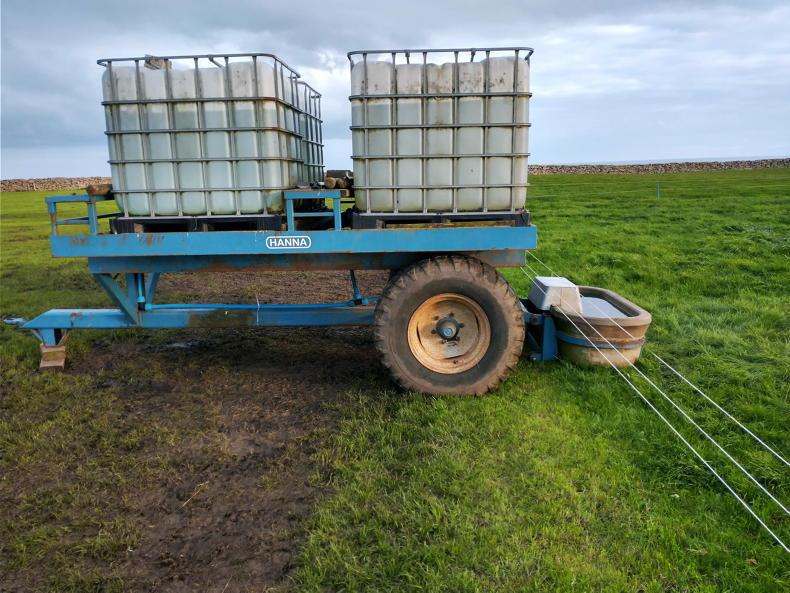
James prefers to use a trailer and mobile drinker to provide water to stock as it means he can alternate the site at each grazing.
Some seaweed is also ploughed in when reseeding. James maintains this helps increase soil organic matter, retain moisture and add nutrients, particularly K.
Changing focus
However, it was during a 2015 visit to John Egerton in Fermanagh where James says he was switched on to the benefits of paddock grazing beef cattle.

James Henderson with some of the dairy bred heifers on his farm.
At the time, James was finishing 55 dairy-beef heifers per year on an average of 1.2t of concentrate per head over their lifetime. In 2022, the Hendersons finished 90 heifers on the same land area, with a 55% reduction in lifetime concentrates fed at an average 0.5t/head.
This works out at 1,472kg/ha of beef produced and has delivered an exceptional gross margin of £1,571/ha (€1,826).
Grassland
James puts the improved performance down to better grassland management and making higher-quality silage.
Working with two-day paddocks, all heifers run in two groups and receive no meal at grass.
The first group consists of 80 to 90 heifers in their second grazing season. The second group has the same number, but animals in their first grazing season.

During the summer, paddocks are pre-mowed at every second rotation.
Weekly grass measuring allows James to take out bales when surplus grass is present, which he did back in May.
It also informs him when to put silage back into the diet, as was the case for a couple of weeks from mid-June.
In 2019, another change was a move to pre-mowing grass, rather than topping after grazing.
James pre-mows paddocks in every other rotation, starting in the third rotation, and usually stops pre-moving towards the end of August.
“When we pre-mow, we only give enough for one day. We split the paddock. It takes 10 minutes to put a fence up and five minutes to take it down.
If it’s too long and the grass is wet, it doesn’t work as well. If it’s long and dry, it is OK,” he told UGS members. He normally follows after each rotation with a light dusting of nitrogen.
60ha farm with 6ha in tillage.Between 80 and 90 dairy-bred heifers purchased each year.250 ewes and replacements.All stock rotationally grazed in paddocks.All fields reseeded every 10 years. Preference for Blue-bred heifers
Farmers in Northern Ireland (NI) finishing dairy-bred beef have two advantages over farmers south of the Irish border. Firstly, a significant proportion of the NI dairy herd is autumn calving. Secondly, there is not the same Jersey influence limiting carcase weights.
All heifers on the Henderson farm are October-/November-born and weaned off milk in time for a grass-only diet by turnout in mid-March.
By this stage, heifers have consumed approximately 300kg of meal, which equates to 60% of their total concentrate intake.
“I like to buy a Blue heifer as they are more likely to come from AI bulls. The Angus, in my mind, are more likely to come off a stock bull, so the genetics might not be as good.
On average, heifers are slaughtered at 320kg to 340kg deadweight by 23 to 24 months
The cattle in general are O+ and R grading. But it’s all about the number of kilos I can produce off grass,” said James. Heifers in the older group are now being slaughtered, although some will be housed for a quick finish. On average, heifers are slaughtered at 320kg to 340kg deadweight by 23 to 24 months.
The yearling heifers are housed in November. Any Angus or Hereford heifers are split out and receive no meal to avoid them going overfat. Blue heifers get a small amount of concentrate, depending on silage quality.
Red clover and
multispecies swards
Around 10 acres of a grass/red clover (AberClaret) sward follows winter barley and receives slurry only. It is cut for silage with bales fed to younger calves.

Red clover silage on the Henderson farm.
With limited options to control weeds, the sward was grazed with sheep this spring, before taking three cuts of silage, averaging four to five bales/acre in each cut.
The sward is in good condition, but some damage is evident at the headlands, with less red clover apparent.
Thistles
A small area of multispecies sward is currently being grazed by lambs, but James has struggled to keep the weeds down, especially thistles.
“The multispecies is perhaps a road I am going to have to go down, whether I like it or not,” he said.
The flock of 250 Rouge x Texel ewes are all homebred. Only performance-recorded rams are bought-in going back over the last 12 years.
Replacements are kept from the best-performing ewes based on eight-week lamb weights. Ewes not suited to breed replacements are crossed to a Primera ram.
“He looked very ordinary when he arrived. But I am very happy with how he has done. We can use him on ewe lambs as well,” he said.
Recently, a Meatlinc ram was purchased as was a new Highlander ram coming in from UK sheep breeding company, Innovis to replace his Texel.
Sheep are also grazed in paddocks with James alternating fields between sheep and cattle each year to reduce keep worm burdens. Ewes are allowed to run over most of the farm during the winter, which does tend to delay turnout for cattle.
“If there wasn’t sheep I could move earlier. But the sheep keep a dense sward and maintain good-quality grass,” he said.
In 2022, ewes weaned 1.71 lambs on 56kg of concentrate per head. This produced 436kg/ha of carcase with lambs finished at an average 140 days, giving a gross margin of £1,196/ha (€1,390).
Read more
WFP chief 'pleased with what Ireland does' on beef and dairy
Irish farm buildings as unique as our grass-based system
Across Ireland, most farmers endured a wet July and mediocre August in terms of weather. But for the Henderson family, the July rain was welcomed on their coastal farm at Greencastle, just outside Kilkeel in Co Down.
James farms alongside his wife, Brenda, and son, Scott, with his two other children, Ross and Lois, also helping out.
The land is free-draining, giving it an obvious natural advantage when compared to land further north and west.
But farming on top of sand brings its own challenges. The key for every business is to make the most of what you have and in the case of the Henderson farm, it would be hard to find a more efficiently run beef and sheep unit on this island.

James prefers Blue cross heifers for his finishing system. Between 80 and 90 calves are purchased every autumn and finished at 23 to 24 months around 340kg deadweight.
History
The 150ac Seafields Farm has a unique history having previously been the site of a US army base during World War II.
Hosting a summer visit by the Ulster Grassland Society, James told members that by the 1960s, around 30 acres, or one-fifth of the farm, was still under concrete.

Concrete from an old US army airfield was dug up and used to make field boundaries in the 1960s.
The concrete was removed and used to make field boundaries. “Sorting out the walls was my father’s lifetime work. I have had the easy job which is to improve the soil,” said James.
Having been farmed in an extensive way by his father, James has gradually built up soil fertility. Most fields are now at optimal levels for pH, potassium (K) and phosphorus (P).

James prefers to use a trailer and mobile drinker to provide water to stock as it means he can alternate the site at each grazing.
Some seaweed is also ploughed in when reseeding. James maintains this helps increase soil organic matter, retain moisture and add nutrients, particularly K.
Changing focus
However, it was during a 2015 visit to John Egerton in Fermanagh where James says he was switched on to the benefits of paddock grazing beef cattle.

James Henderson with some of the dairy bred heifers on his farm.
At the time, James was finishing 55 dairy-beef heifers per year on an average of 1.2t of concentrate per head over their lifetime. In 2022, the Hendersons finished 90 heifers on the same land area, with a 55% reduction in lifetime concentrates fed at an average 0.5t/head.
This works out at 1,472kg/ha of beef produced and has delivered an exceptional gross margin of £1,571/ha (€1,826).
Grassland
James puts the improved performance down to better grassland management and making higher-quality silage.
Working with two-day paddocks, all heifers run in two groups and receive no meal at grass.
The first group consists of 80 to 90 heifers in their second grazing season. The second group has the same number, but animals in their first grazing season.

During the summer, paddocks are pre-mowed at every second rotation.
Weekly grass measuring allows James to take out bales when surplus grass is present, which he did back in May.
It also informs him when to put silage back into the diet, as was the case for a couple of weeks from mid-June.
In 2019, another change was a move to pre-mowing grass, rather than topping after grazing.
James pre-mows paddocks in every other rotation, starting in the third rotation, and usually stops pre-moving towards the end of August.
“When we pre-mow, we only give enough for one day. We split the paddock. It takes 10 minutes to put a fence up and five minutes to take it down.
If it’s too long and the grass is wet, it doesn’t work as well. If it’s long and dry, it is OK,” he told UGS members. He normally follows after each rotation with a light dusting of nitrogen.
60ha farm with 6ha in tillage.Between 80 and 90 dairy-bred heifers purchased each year.250 ewes and replacements.All stock rotationally grazed in paddocks.All fields reseeded every 10 years. Preference for Blue-bred heifers
Farmers in Northern Ireland (NI) finishing dairy-bred beef have two advantages over farmers south of the Irish border. Firstly, a significant proportion of the NI dairy herd is autumn calving. Secondly, there is not the same Jersey influence limiting carcase weights.
All heifers on the Henderson farm are October-/November-born and weaned off milk in time for a grass-only diet by turnout in mid-March.
By this stage, heifers have consumed approximately 300kg of meal, which equates to 60% of their total concentrate intake.
“I like to buy a Blue heifer as they are more likely to come from AI bulls. The Angus, in my mind, are more likely to come off a stock bull, so the genetics might not be as good.
On average, heifers are slaughtered at 320kg to 340kg deadweight by 23 to 24 months
The cattle in general are O+ and R grading. But it’s all about the number of kilos I can produce off grass,” said James. Heifers in the older group are now being slaughtered, although some will be housed for a quick finish. On average, heifers are slaughtered at 320kg to 340kg deadweight by 23 to 24 months.
The yearling heifers are housed in November. Any Angus or Hereford heifers are split out and receive no meal to avoid them going overfat. Blue heifers get a small amount of concentrate, depending on silage quality.
Red clover and
multispecies swards
Around 10 acres of a grass/red clover (AberClaret) sward follows winter barley and receives slurry only. It is cut for silage with bales fed to younger calves.

Red clover silage on the Henderson farm.
With limited options to control weeds, the sward was grazed with sheep this spring, before taking three cuts of silage, averaging four to five bales/acre in each cut.
The sward is in good condition, but some damage is evident at the headlands, with less red clover apparent.
Thistles
A small area of multispecies sward is currently being grazed by lambs, but James has struggled to keep the weeds down, especially thistles.
“The multispecies is perhaps a road I am going to have to go down, whether I like it or not,” he said.
The flock of 250 Rouge x Texel ewes are all homebred. Only performance-recorded rams are bought-in going back over the last 12 years.
Replacements are kept from the best-performing ewes based on eight-week lamb weights. Ewes not suited to breed replacements are crossed to a Primera ram.
“He looked very ordinary when he arrived. But I am very happy with how he has done. We can use him on ewe lambs as well,” he said.
Recently, a Meatlinc ram was purchased as was a new Highlander ram coming in from UK sheep breeding company, Innovis to replace his Texel.
Sheep are also grazed in paddocks with James alternating fields between sheep and cattle each year to reduce keep worm burdens. Ewes are allowed to run over most of the farm during the winter, which does tend to delay turnout for cattle.
“If there wasn’t sheep I could move earlier. But the sheep keep a dense sward and maintain good-quality grass,” he said.
In 2022, ewes weaned 1.71 lambs on 56kg of concentrate per head. This produced 436kg/ha of carcase with lambs finished at an average 140 days, giving a gross margin of £1,196/ha (€1,390).
Read more
WFP chief 'pleased with what Ireland does' on beef and dairy
Irish farm buildings as unique as our grass-based system










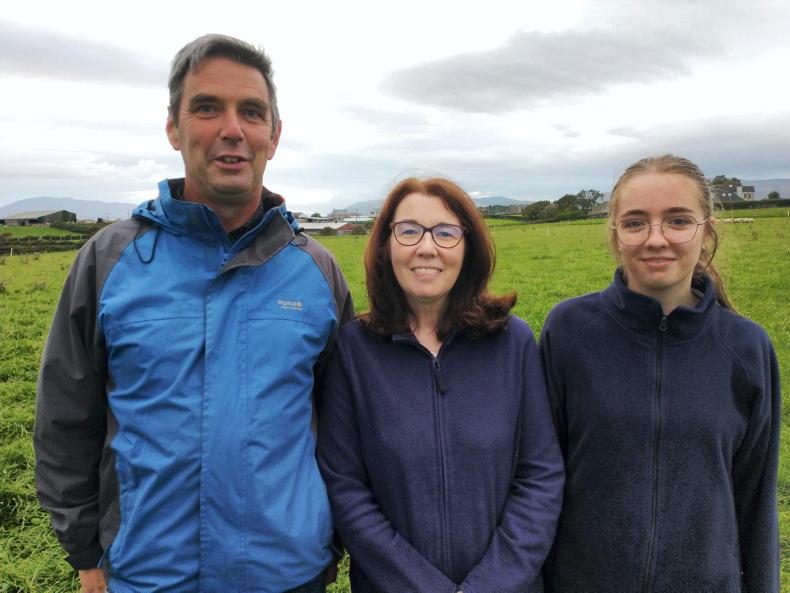
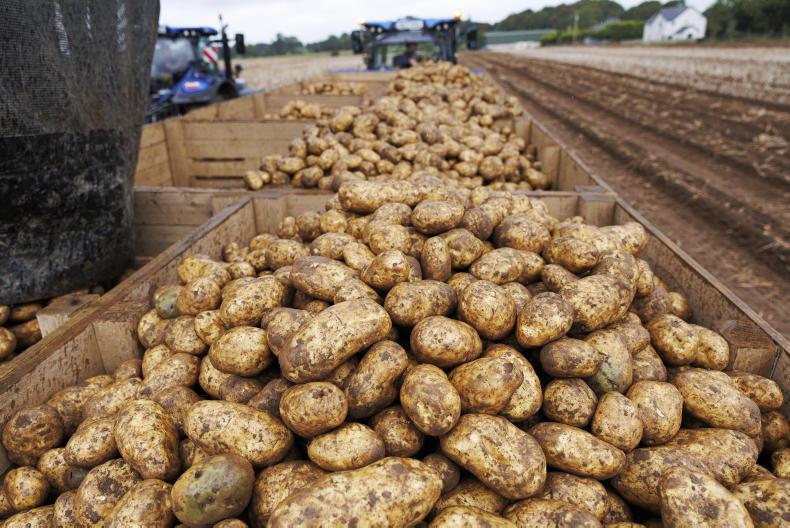
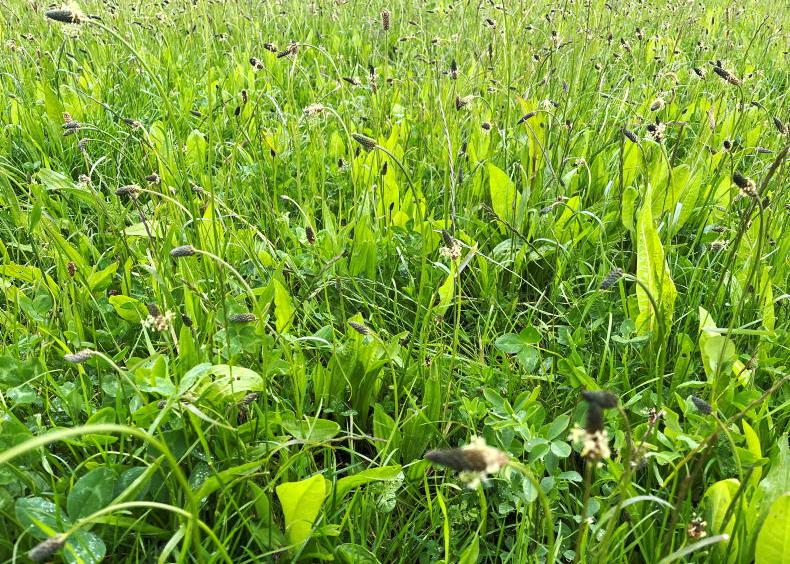
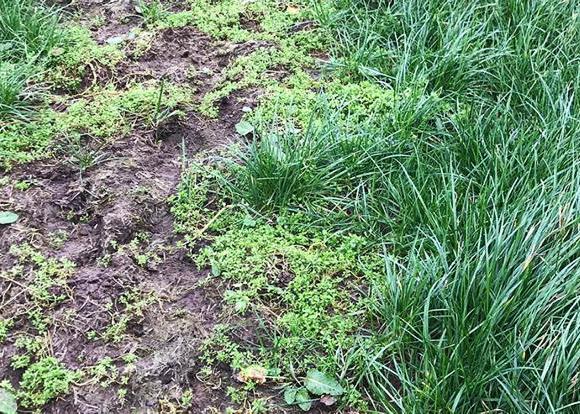
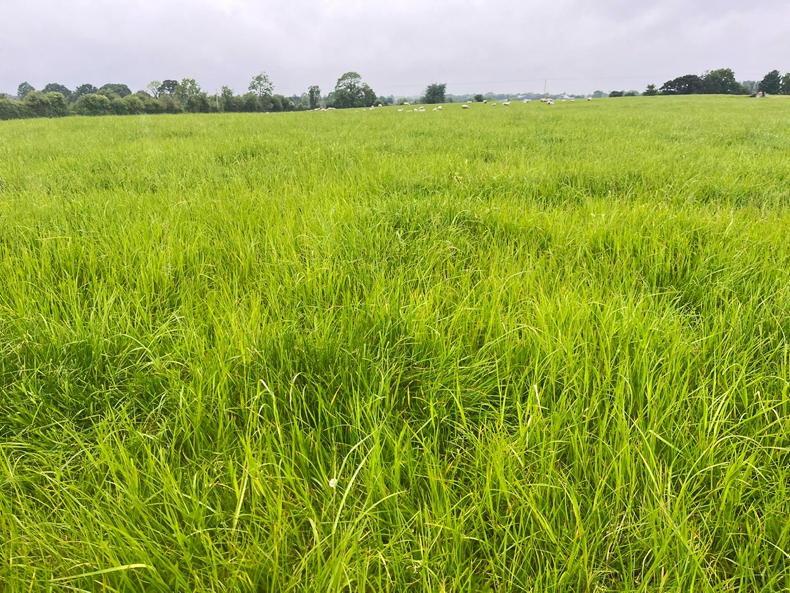
SHARING OPTIONS